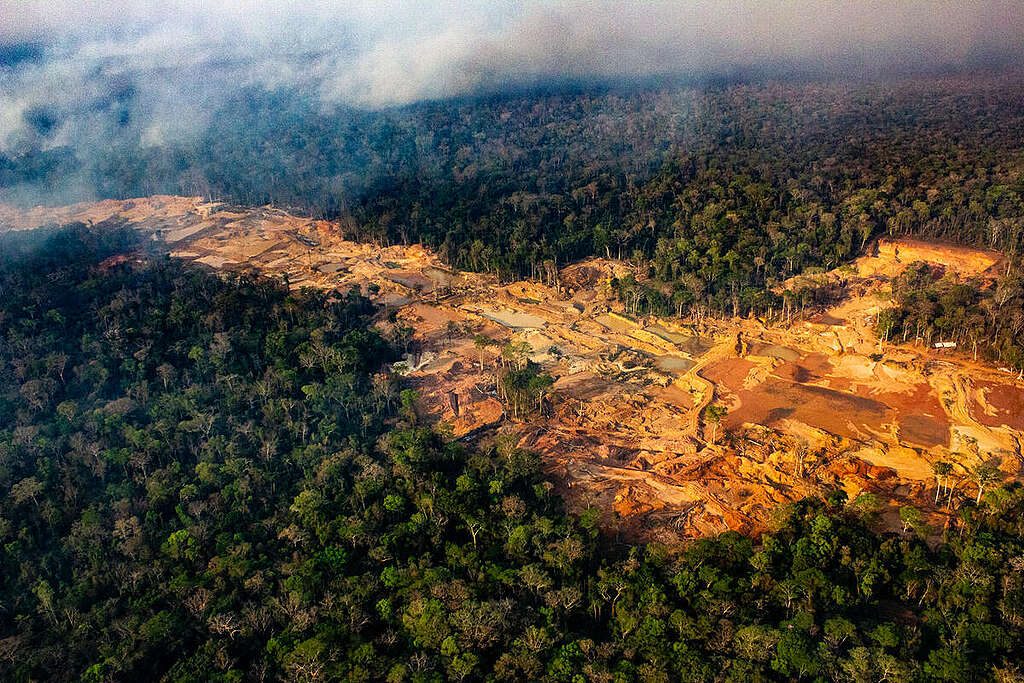Are you ready to learn about one of the most extraordinary places on the planet - the Amazon Rainforest - and the incredible animals that call her home? From elusive jaguars and to playful river dolphins, every creature featured in this blog relies entirely on the rainforest for food, protection, and life itself. The dense canopy, winding rivers, and rich biodiversity form a delicate balance that sustains them all. But that balance is under threat. As deforestation and industrial livestock agriculture expansion continue to tear down their habitat, these animals face an uncertain future. Today - and always - let's celebrate their wild beauty, and remember that protecting the Amazon means protecting them, too.
Keep reading to find key facts about why this extraordinary ecosystem matters and what we can do to save it.

Incredible Amazon Forest Animal Facts
The Amazon Forest is home to 10% of All Known Species of Animal
The Amazon is estimated to house at least 10% of all known species of plants and animals worldwide. This extraordinary biodiversity makes it one of the most vital ecosystems on Earth, supporting countless species that play essential roles in ecological balance. [1]
New Species are Discovered Every Two Days
A new species of plant or animal is discovered in the Amazon every two days, according to a study from 2015. However, the threat of deforestation could lead to the extinction of many species before they are even discovered, highlighting the urgency for conservation. [2]
The Amazon is a Diverse Habitat
The Amazon Basin is home to more species of fish than any other river basin in the world, including iconic species like the piranha and the pirarucu. The diverse aquatic life supports the livelihoods of many Indigenous and local communities. [3]
Unique Insect Life
Scientists have found that in just 16 hectares of the Amazon, there are more ant species than in all of Europe. This demonstrates the rainforest's astonishing diversity, even among its smallest inhabitants.[4]
Threatened Species
The Amazon is home to many endangered species such as the Amazon River dolphin, Giant Otter, Tucuxi, Sun Conure, and Amazonian manatee. These species are under constant threat due to habitat destruction, illegal hunting, and pollution. [5]
Get to Know Animals who Live in the Amazon (with pictures)
Amazon River Dolphin
The Amazon river dolphin, or Boto-cor-de-rosa (inia geoffrensis), is the largest river dolphin species and is known for its unique pink colour, which becomes more vibrant with age, especially in males. Adapted to life in the flooded forests of the Amazon, they have flexible necks that allow them to navigate through submerged trees with ease. Their diet is varied, consisting of over 50 species of fish. The Amazon River dolphin is threatened by illegal hunting, the climate crisis and river pollution. Its survival is closely tied to the health of river ecosystems, which are increasingly under pressure from human activity. [6]
Giant Otter
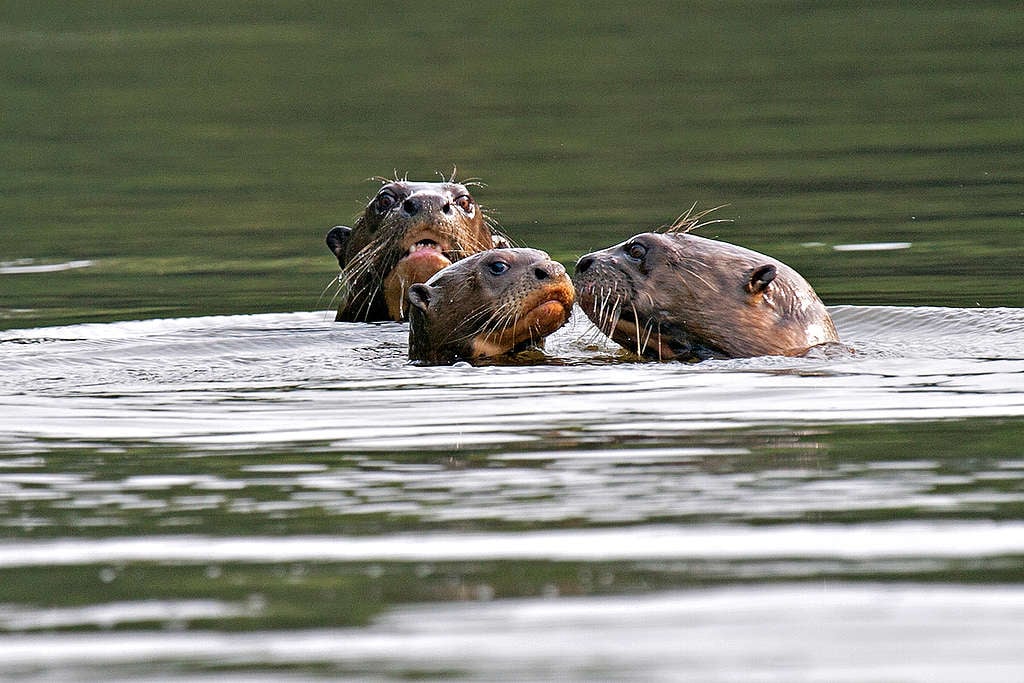
The Amazonian giant otter (Pteronura brasiliensis) is the largest otter species, growing up to six feet long. These social animals live in family groups and are known for their strong bonds and cooperative hunting. Their diet mainly consists of fish, but they also eat crustaceans and small river creatures.Giant otters face threats from habitat destruction and hunting. As a keystone species, their decline signals broader ecological risks for river habitats in the Amazon. [7]
Tucuxi
The tucuxi (Sotalia fluviatilis) is a freshwater dolphin native to the Amazon and Orinoco river basins. Resembling the bottlenose dolphin but smaller, tucuxis typically reach lengths of about 1.5 metres. They exhibit a light to bluish-grey coloration on their back and sides, with a much lighter, often pinkish, ventral region. These dolphins are social creatures, commonly found in groups of 10 to 15 individuals, and are known for their active behavior, including breaching and tail-splashing.This freshwater dolphin is endangered due to accidental capture in fishing nets and pollution. Its conservation depends on reducing fishing impacts and improving river health. [8]
Sun Conure
The sun conure (Aratinga solstitialis), also known as the sun parakeet, is a medium-sized parrot native to northeastern South America. Renowned for its vibrant plumage, this species exhibits predominantly golden-yellow feathers with orange-flushed underparts and face, complemented by green and blue-tipped wings and tail feathers.This bright, colourful parrot is under threat from illegal wildlife trade and habitat loss. Protecting its natural habitat is critical to preventing its extinction. [9]
Amazonian Manatee
The Amazonian manatee (Trichechus inunguis) is a freshwater mammal native to the Amazon Basin, found in slow-moving rivers, lakes, and flooded forests across Brazil, Colombia, Ecuador, Guyana, and Peru. It is the smallest of all manatee species, growing up to 2.8 metres (9.2 feet) long and weighing around 480 kilograms (1,056 pounds). This herbivore feeds on aquatic plants like water lettuce and hyacinths, consuming up to 8% of its body weight daily.The Amazonian manatee is at risk due to hunting and degradation of aquatic habitats. Conservation efforts are focusing on reducing hunting pressures and protecting water systems. [10]
Hyacinth Macaw
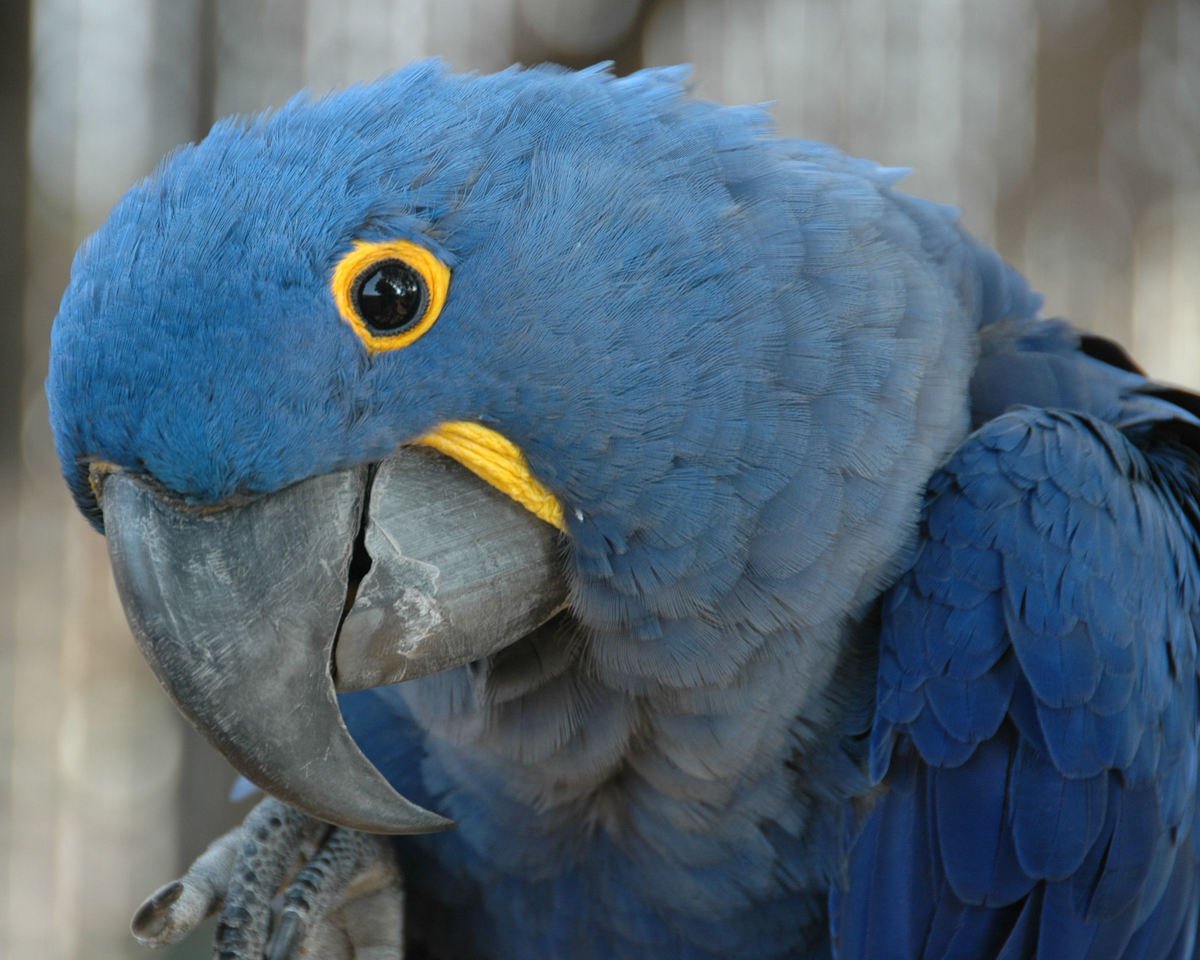
The hyacinth macaw (Anodorhynchus hyacinthinus) is the largest parrot species, known for its striking cobalt-blue feathers and bright yellow accents around the eyes and beak. Native to parts of Brazil, Bolivia, and Paraguay, these birds can reach lengths of nearly a metre. They are highly social and intelligent, often seen in pairs or small groups. Threatened by illegal trade and habitat loss, the Hyacinth Macaw depends on preserving the Amazon's dense forests for survival. [11]
Jaguar
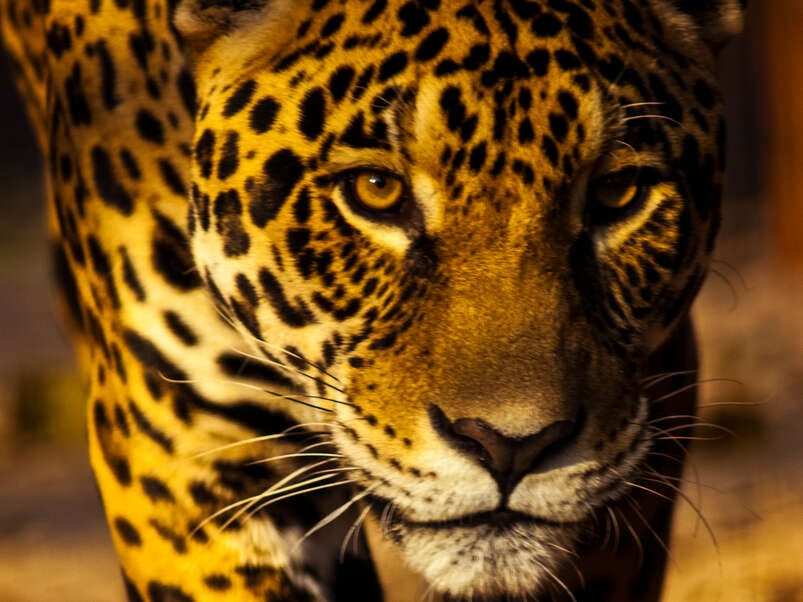
The jaguar (Panthera onca) is the largest cat in the Americas, boasting a powerful build with large, round heads and short legs. Their stunning coats are adorned with dark rosettes and spots. These cats are adept swimmers and often reside near water bodies. Their strong jaws can pierce through the skulls of prey, including deer, armadillos, monkeys, and lizards. Currently classified as Near Threatened, jaguars have lost half of their historic range due to habitat loss and conflicts with humans. Habitat loss and illegal hunting are major threats to jaguars. Protecting large tracts of contiguous rainforest is essential for their long-term survival. [12]
Margay
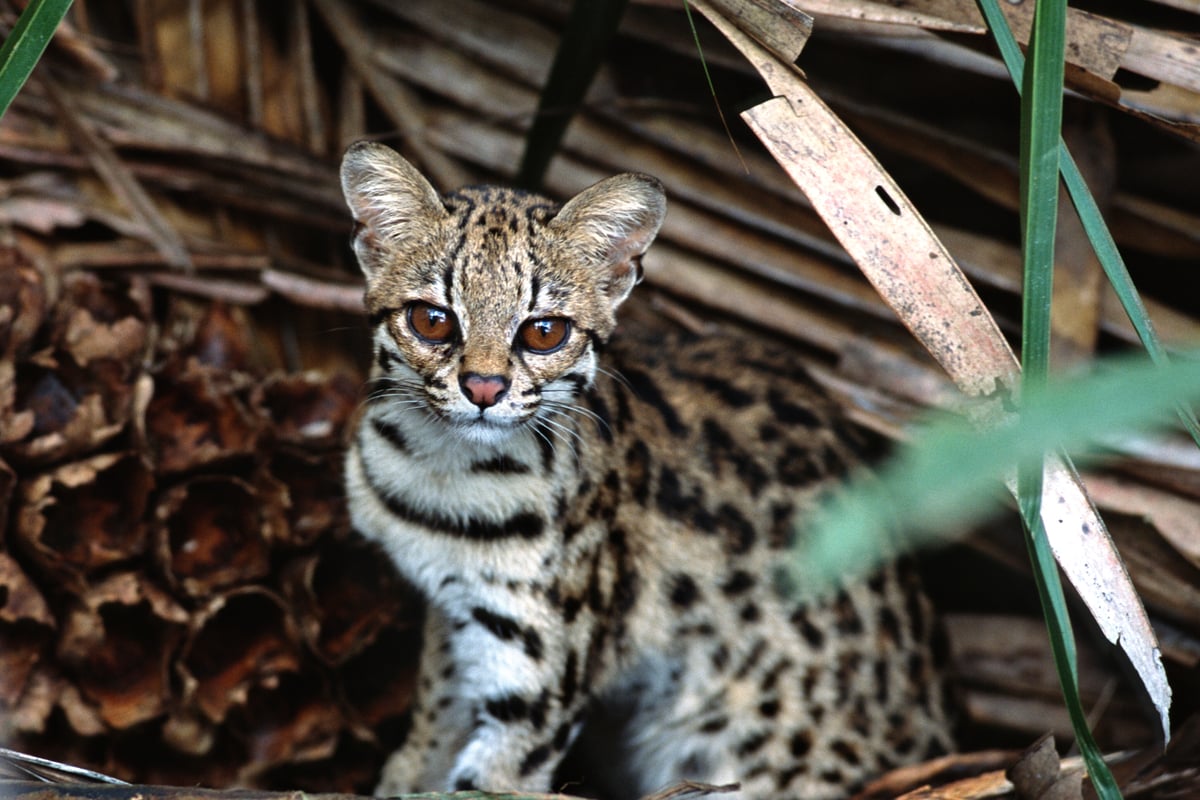
Scarlet Macaw
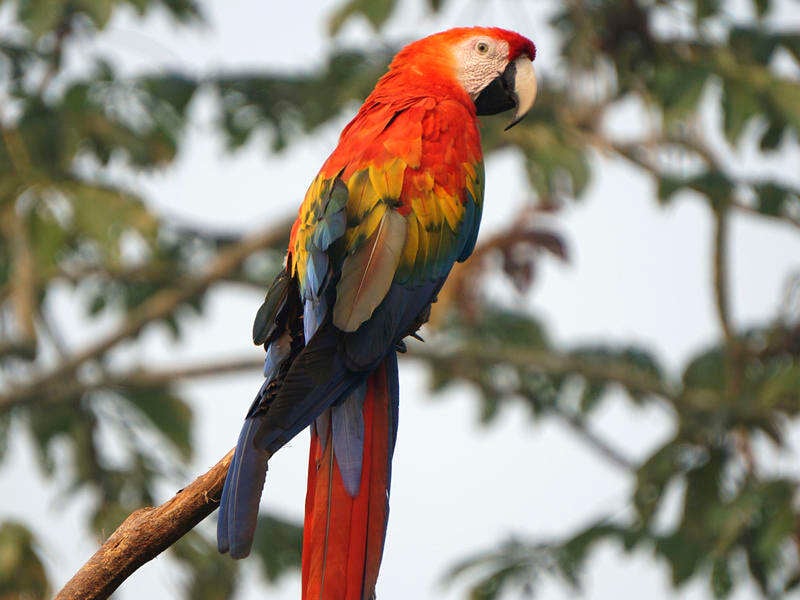
The scarlet macaw (Ara macao) is a large, brightly coloured parrot native to the rainforests of Central and South America, from southern Mexico to Brazil. It grows up to 84 centimetres (33 inches) long and is known for its striking red, blue, and yellow feathers, as well as its strong, curved beak, which helps crack open nuts and seeds. These intelligent birds form monogamous pairs, nesting in tree cavities and caring for their young through mutual preening. They can eat toxic fruits, likely neutralising toxins by consuming clay.
Although classified as least concern, the Scarlet Macaw faces threats from illegal trade and habitat destruction in certain regions. Ongoing monitoring is essential to ensure its populations remain stable. [14]
Each animal plays a role in maintaining the delicate balance of the Amazon rainforest. As their home disappears, so does the intricate web of life they help sustain. So let's remember that our actions ripple far beyond us. By protecting their habitat, we're not just preserving wildlife - we're safeguarding one of the most vital, life-giving places on Earth for generations to come.
The animals of the Amazon Forest need to be respected and protected for future generations. Please sign our petition to urge governments to put an end to forest destruction.
Ask political leaders to act on their promises to stop Amazon destruction.

